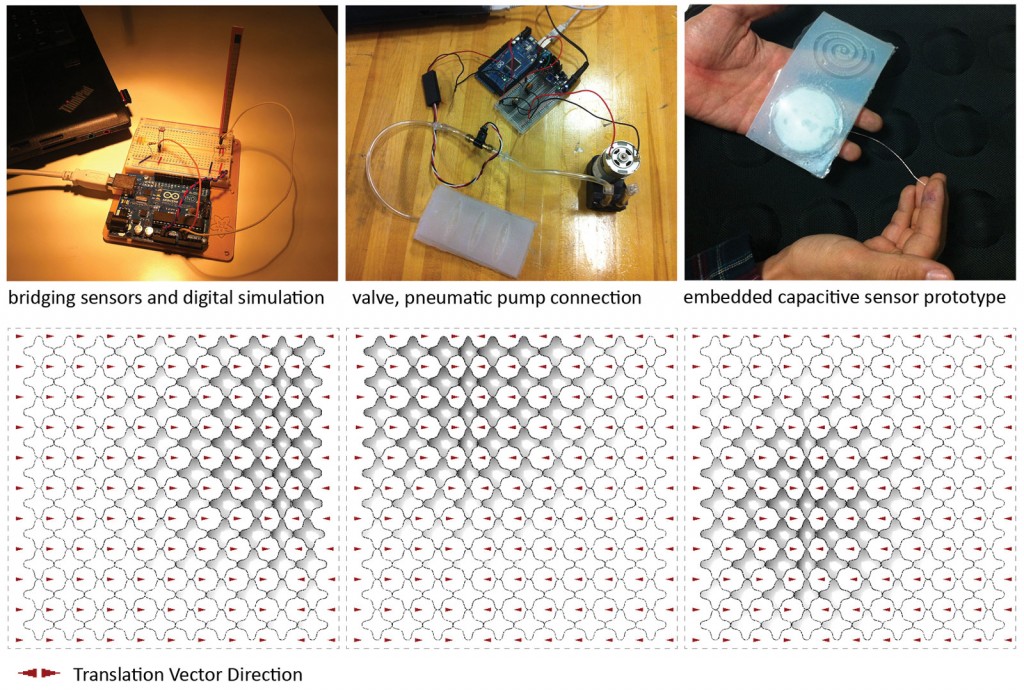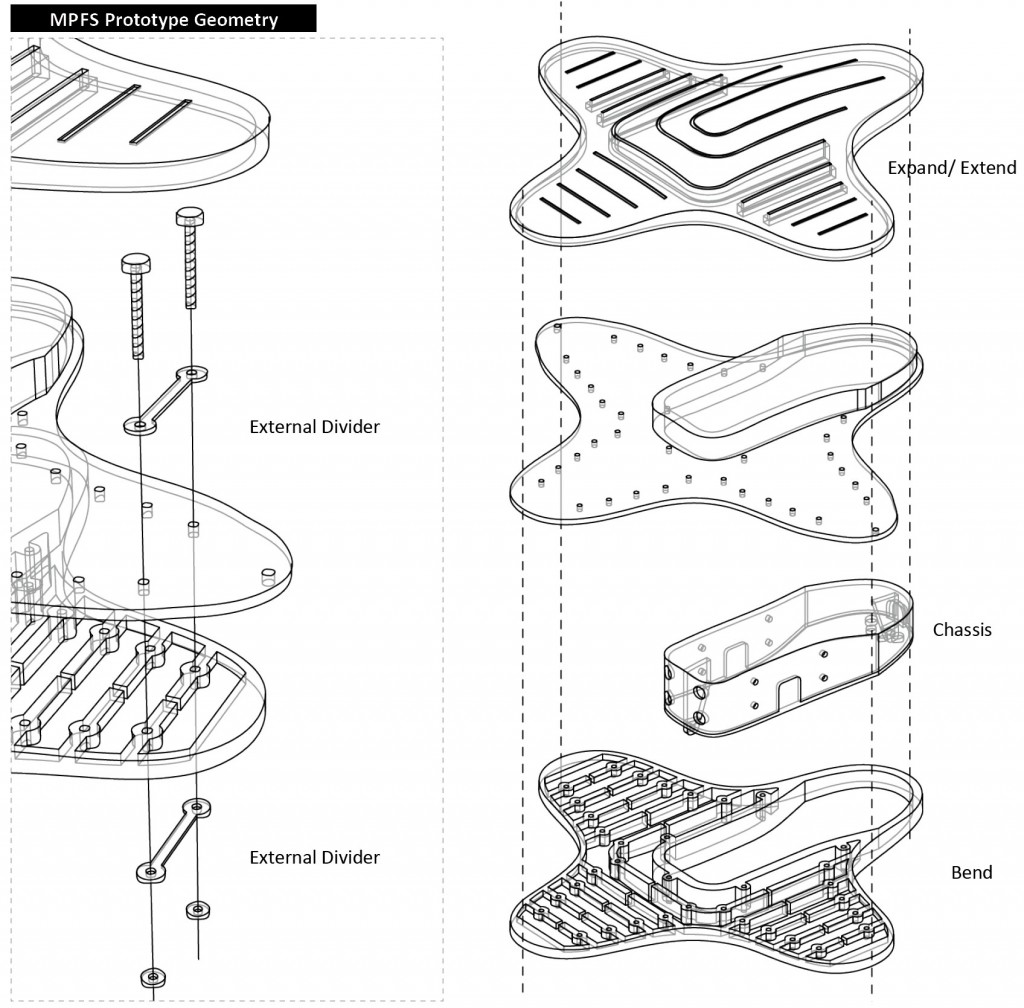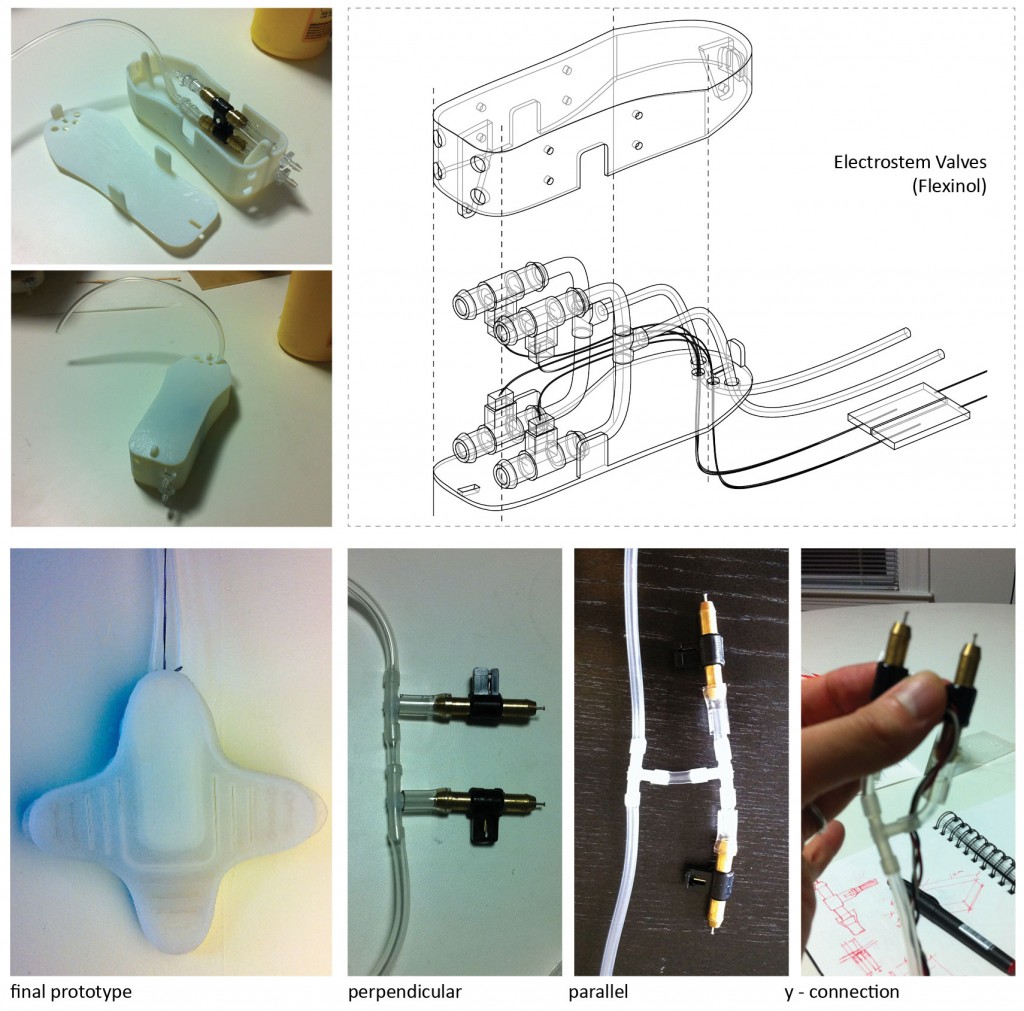Soft Modular Pneumatic System (SMPS), attempts to juxtapose key characteristics of biological design (modularity, robustness, homeostasis, and adaptive) with smart technologies (material, sensor, actuation, and control) in order to create a kinetic façade system that respond and interact with its environment in real-time. Similar to how an independent cell coordinates with each other to undergo certain tasks in multicellular systems in nature, the MPFS is consisted of autonomous modules that collectively achieve assigned functions. Each SMPS module is integrated with its own sensor, actuation, and control components which contribute to the robustness of the system as well as allow it to adapt to external stimulus. As an aggregated system, SMPS’s has potentials to initiate emergent behaviors at the global level due to the chain reaction between individual modules at the local level. Inspired by the hydro skeletons and muscular hydrostats in nature (e.g. elephant trunk, starfish, octopus arm, etc.), the kinematics are based on the combination of elastic material body actuator and pneumatic pressure feedback system.
SMPS
Information
- Collaboration with Woongki Sung and Namju Lee
- Critic: Takehiko Nagakura, Leah Buechley, Martin Bechthold, Allen Sayegh, David Mah
Publication
- Park, Daekwon, and Martin Bechthold. 2013. “Designing Biologically-Inspired Smart Building Systems: Processes and Guidelines.” International Journal of Architectural Computing 11 (4): 437–64. doi:10.1260/1478-0771.11.4.437.




